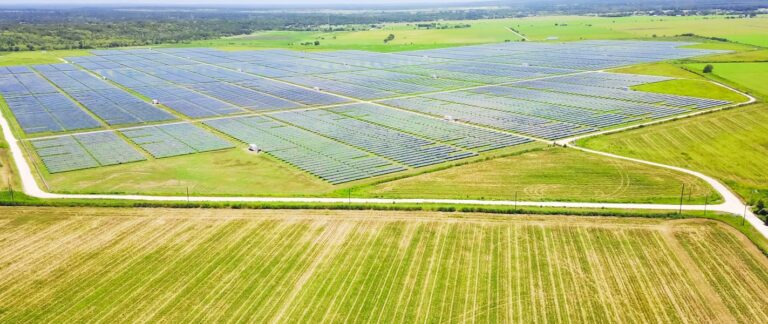By Dennis Wamsted and Seth Feaster | Institute of Energy Economics and Financial Analysis (IEEFA)
Rising demand for electricity is not standing in the way of a cleaner grid, and we need look no further than Texas for proof.
Over the past decade, electricity generation in Texas increased by 104.6 million MWh, from 391.9 million MWh in 2013 to 496.5 million MWh in 2023. This increase far exceeded growth elsewhere in the United States. It was more than three times the increase in generation in the next fastest growing state, Florida, which saw an increase of 38.1 million MWh in the same decade. Indeed, the increase in Texas was greater than the total 2023 generation in 37 states.

But this increased generation was not provided by fossil fuels. In 2013, wind energy accounted for 9.2% of the state’s annual generation, or 35.9 million MWh of Texas’ total. Utility-scale solar accounted for just 0.2 million MWh, or just four-hundredths of one percent (0.04%).
Ten years later, in 2023, utility-scale wind and solar combined generated 147.2 million MWh, or 29.6% of total generation in Texas – a threefold increase in market share despite the significant increase in the state’s electricity demand . In contrast, combined coal and gas generation fell over the same period, from 314.8 million MWh in 2013 to 306 million MWh last year. This happened because the decrease in coal production was greater than the increase in gas production. In other words, Texas could meet all of its energy demand growth – more than 2.6% per year – with renewable energy sources.

This ability of Texas energy producers to match the blistering growth rate of the past decade with renewables is instructive for utilities across the country, who are now preparing for what they say will be a sharp increase in demand growth over the next decade will be.
Another way to look at these numbers is through the lens of market share. Measured this way, the decline for coal and gas is much greater: from a share of 80.3% of total generation in 2013 to 61.6% in 2023. In other words: the electricity grid has become larger and greener at the same time. That model can be replicated elsewhere.
Another success story is developing in New England. On a sunny day, small-scale behind-the-meter solar regularly accounts for more than 30% of demand in the six-state ISO-New England (ISO-NE) system, sending more than 5,000 megawatts (MW) into energy . schedule. Looking forward, the grid operator projects that installed solar capacity – most of it behind the meter – will exceed 10,000 MW by 2028. There’s a good chance the system will reach that goal sooner, given that past predictions have significantly underestimated the rate of solar energy growth in the region.
In addition to the strong growth of solar energy, 1,800 MW of battery storage was released during ISO-NE’s latest capacity auction, which covers the year starting June 2027. Five years ago, only 5 MW of battery storage was selected at the regional auction. Storage is a perfect complement to New England’s growing zero-emission solar and offshore wind capacity.
Despite these green transition success stories, U.S. utilities, which recently began warning their regulators of an impending increase in demand over the next decade, also began pushing for permission to build thousands of megawatts of new gas-fired generation capacity.
For example, Georgia Power said last fall that it now expects demand growth to increase in its service territory 6,600 MW by 2030, a sharp increase from the 400 MW of new growth forecast just eighteen months ago. To meet much of that demand, the utility has asked state regulators to support an expansion plan that includes about 1,400 MW of new gas turbine capacity at the Yates plant; a proposed contract for power from a gas plant in Florida; and continuation of a coal-backed power purchase agreement with Mississippi Power, another southern subsidiary. As for solar energy storage and batteries, these are only a small part of the utility’s ongoing plan, despite the relatively low cost and ease with which these resources can be built.
Unlike Georgia Power’s fossil fuel-heavy development proposal, developers in Texas brought more than 20,000 MW of solar capacity online between 2019 and 2023, and were able to complete construction of another 21,000 MW over the next two years. Similarly, developers have added nearly 5,000 MW of battery storage in Texas since 2019, with approximately 12,000 MW in the pipeline for completion by the end of 2025.
Georgia Power doesn’t seem to be operating at the same speed. For example, in its updated Integrated Resource Plan (IRP), the company said it was evaluating bids for a single 265 MW battery storage project approved by the commission in conjunction with its 2022 long-term resource plan. The utility says it hopes to submit an engineering and construction agreement for that project to the commission for approval by the end of 2024 and have the system online in the winter of 2026-2027.
Other utilities in the Southeast, including Duke, the Tennessee Valley Authority and Dominion Energy, have proposed similar gas-focused development plans. No one seems to have absorbed the lessons of the transition examples from Texas or New England: strong demand growth and a transition to renewable energy can go hand in hand, and gas is not the only option available to utilities and grid operators.
Dennis Wamsted (dwamsted@ieefa.org) is an IEEFA energy analystAnd Seth Feaster (swfeaster@ieefa.org) is an IEEFA energy data analyst.
Listen to more in-depth conversations on Solar Builder’s YouTube channel

Our most popular series include:
Power forward! | A collaboration with BayWa re to discuss industrial topics at a higher level.
The buzz | Where we give our 2 cents per kWh in the residential solar market.
The pitch | Discussions with solar manufacturers about their new technology and ideas.
Source link


